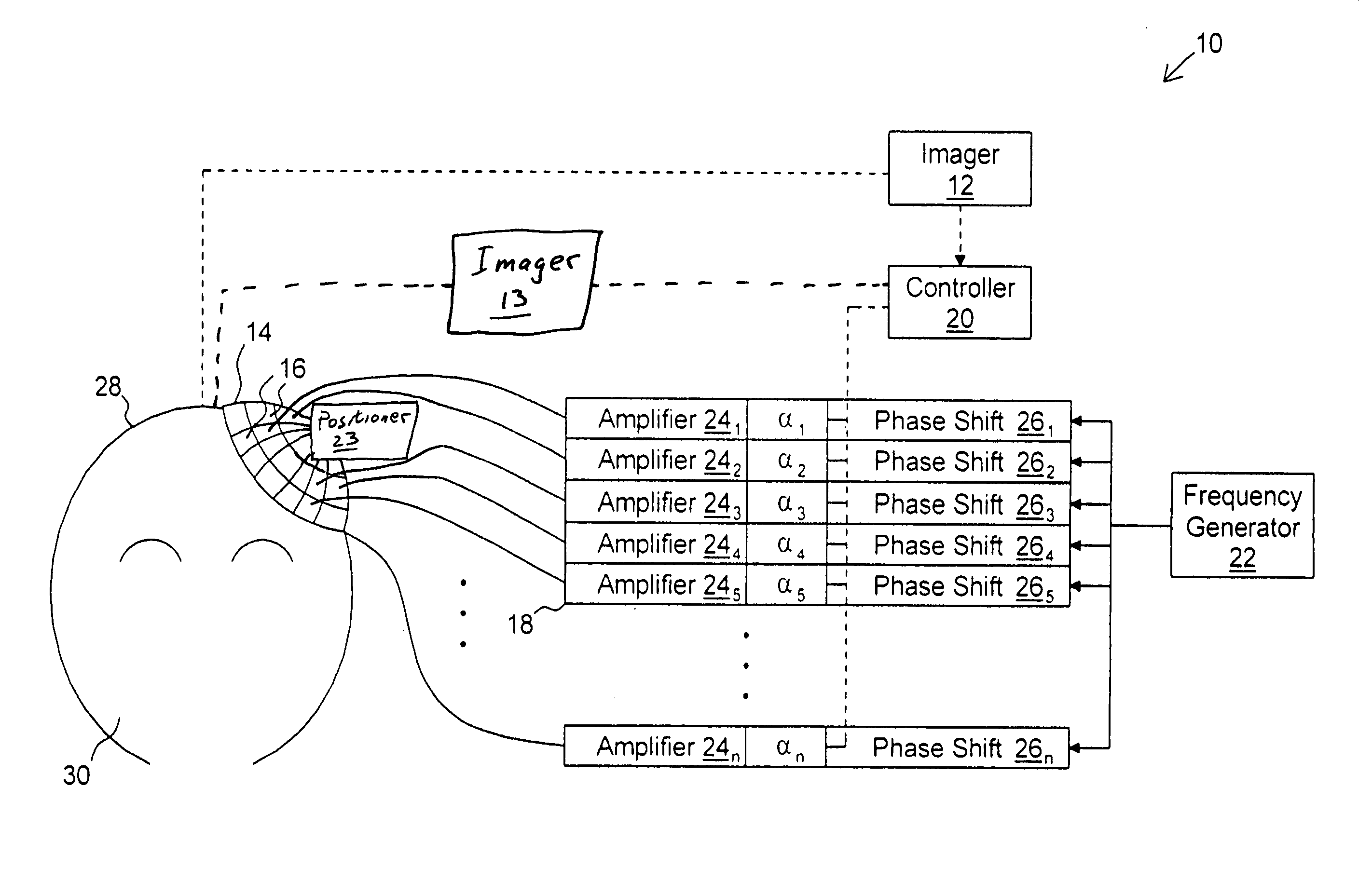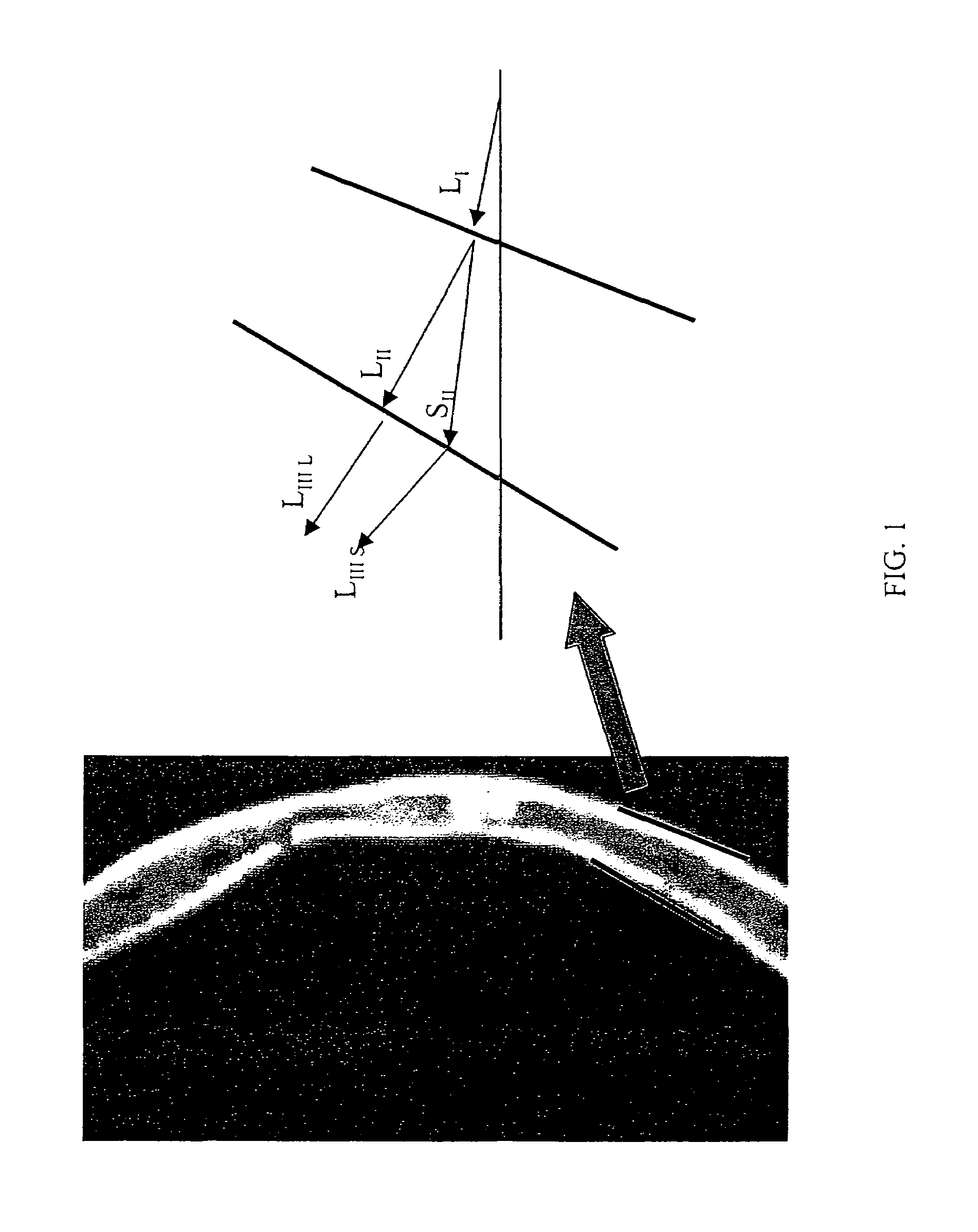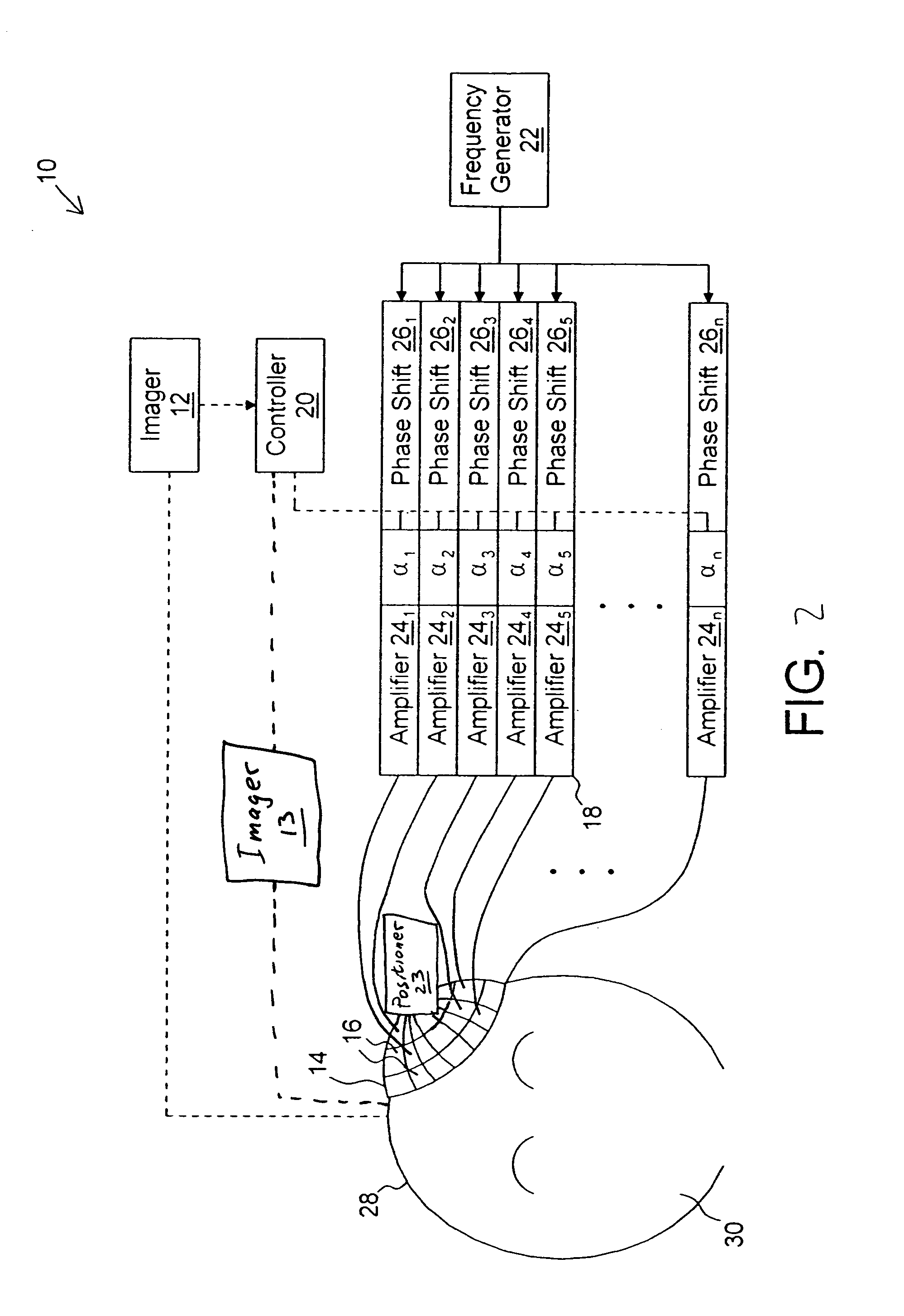Shear mode diagnostic ultrasound
a technology of ultrasound and ultrasound focusing, applied in the field of ultrasound diagnostic and therapeutic applications using shear waves, can solve the problems of transcranial procedures, strong attenuation, distortion caused by irregularities in the shape, density, sound speed, etc., and achieve the effect of improving the prediction of ultrasound focusing through the skull, simple devices, and high gain
- Summary
- Abstract
- Description
- Claims
- Application Information
AI Technical Summary
Benefits of technology
Problems solved by technology
Method used
Image
Examples
Embodiment Construction
[0049]Embodiments of the invention provide techniques for transskull and other transbone propagation that deliberately induces a shear mode in bone. For transskull propagation, incident waves experience a mode conversion from an incident longitudinal wave into a shear wave in the bone layers and then back to a longitudinal wave in the brain. The skull's shear speed may provide a better acoustic impedance match, less refraction, and less phase alteration than its longitudinal counterpart. Using a shear wave, ultrasound may be focused in the brain. Longitudinal waves will not be induced in the bone if the ultrasound is incident upon the bone at an angle beyond Snell's critical angle. Numerical analysis is provided and demonstrations of the phenomena were studied with plastic phantoms and using an ex vivo human skull. Embodiments of the invention may be used for various applications, including therapeutic and diagnostic applications, which are discussed separately below. Other embodime...
PUM
 Login to View More
Login to View More Abstract
Description
Claims
Application Information
 Login to View More
Login to View More - R&D
- Intellectual Property
- Life Sciences
- Materials
- Tech Scout
- Unparalleled Data Quality
- Higher Quality Content
- 60% Fewer Hallucinations
Browse by: Latest US Patents, China's latest patents, Technical Efficacy Thesaurus, Application Domain, Technology Topic, Popular Technical Reports.
© 2025 PatSnap. All rights reserved.Legal|Privacy policy|Modern Slavery Act Transparency Statement|Sitemap|About US| Contact US: help@patsnap.com



